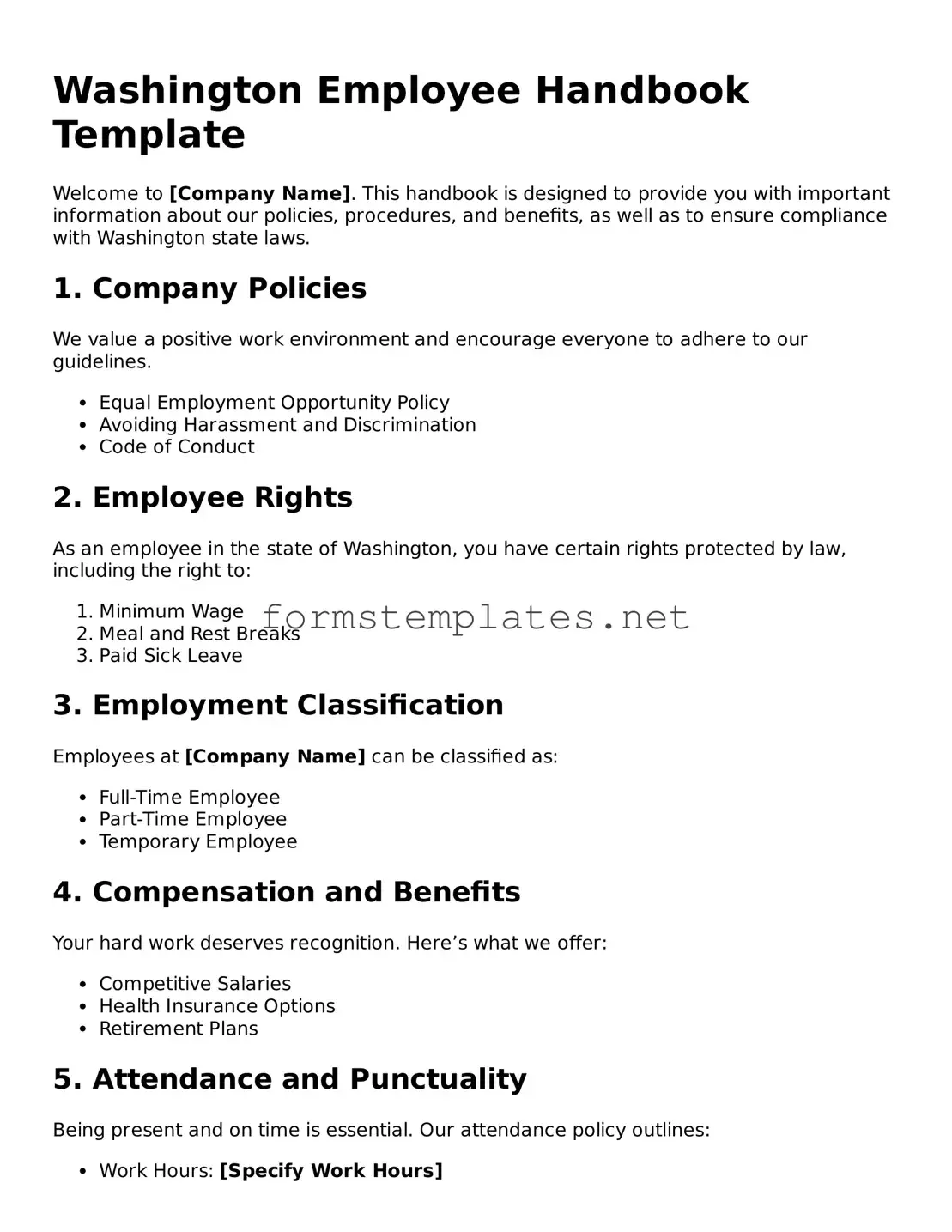Washington Employee Handbook Template
Welcome to [Company Name]. This handbook is designed to provide you with important information about our policies, procedures, and benefits, as well as to ensure compliance with Washington state laws.
1. Company Policies
We value a positive work environment and encourage everyone to adhere to our guidelines.
- Equal Employment Opportunity Policy
- Avoiding Harassment and Discrimination
- Code of Conduct
2. Employee Rights
As an employee in the state of Washington, you have certain rights protected by law, including the right to:
- Minimum Wage
- Meal and Rest Breaks
- Paid Sick Leave
3. Employment Classification
Employees at [Company Name] can be classified as:
- Full-Time Employee
- Part-Time Employee
- Temporary Employee
4. Compensation and Benefits
Your hard work deserves recognition. Here’s what we offer:
- Competitive Salaries
- Health Insurance Options
- Retirement Plans
5. Attendance and Punctuality
Being present and on time is essential. Our attendance policy outlines:
- Work Hours: [Specify Work Hours]
- Reporting Absences: [Specify Reporting Procedure]
6. Workplace Safety
Your safety matters. Please follow our safety regulations to ensure a secure workplace.
- Emergency Procedures
- Workplace Safety Guidelines
7. Employee Conduct
To maintain a respectful workplace, the following conduct is expected:
- Respect for fellow employees
- Professional communication
- Adherence to dress code: [Specify Dress Code]
8. Disciplinary Procedures
If policies are violated, the following steps may be taken:
- Verbal Warning
- Written Warning
- Termination
9. Acknowledgment of Receipt
Please acknowledge that you have received and understand this handbook:
Employee Name: [Employee Name]
Date: [Date]
For any questions regarding the content of this handbook or our policies, please reach out to [HR Contact Information].
